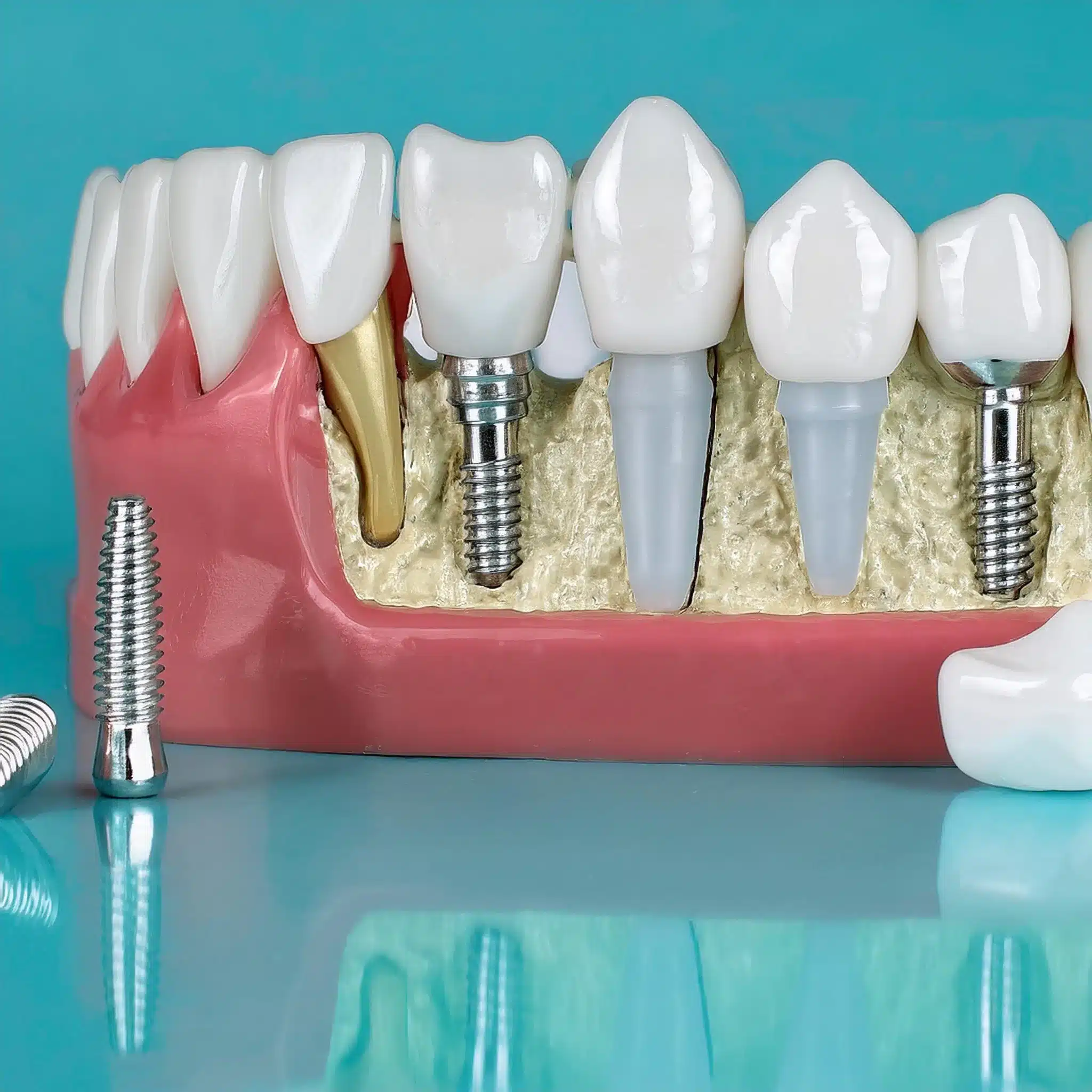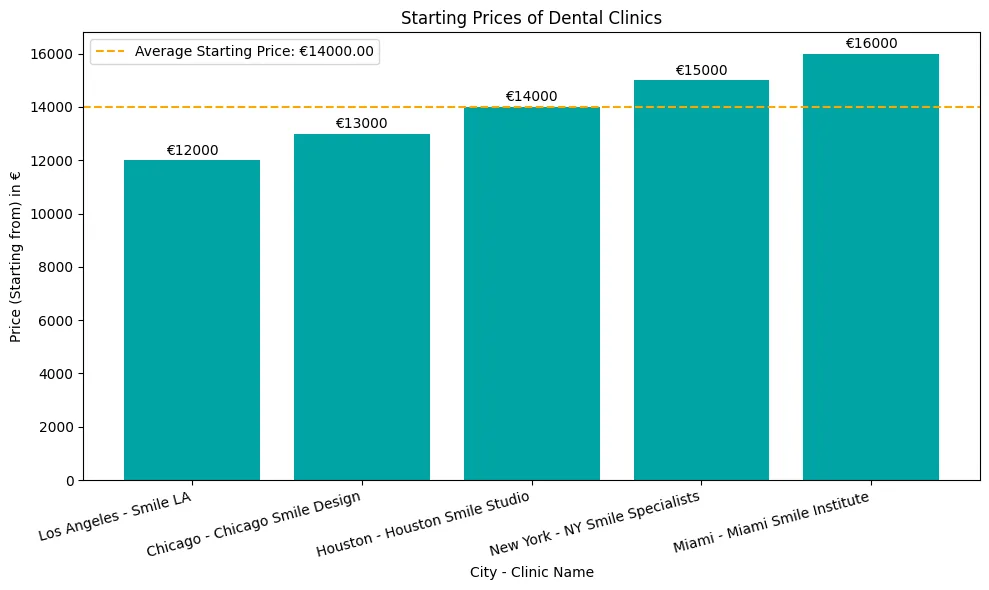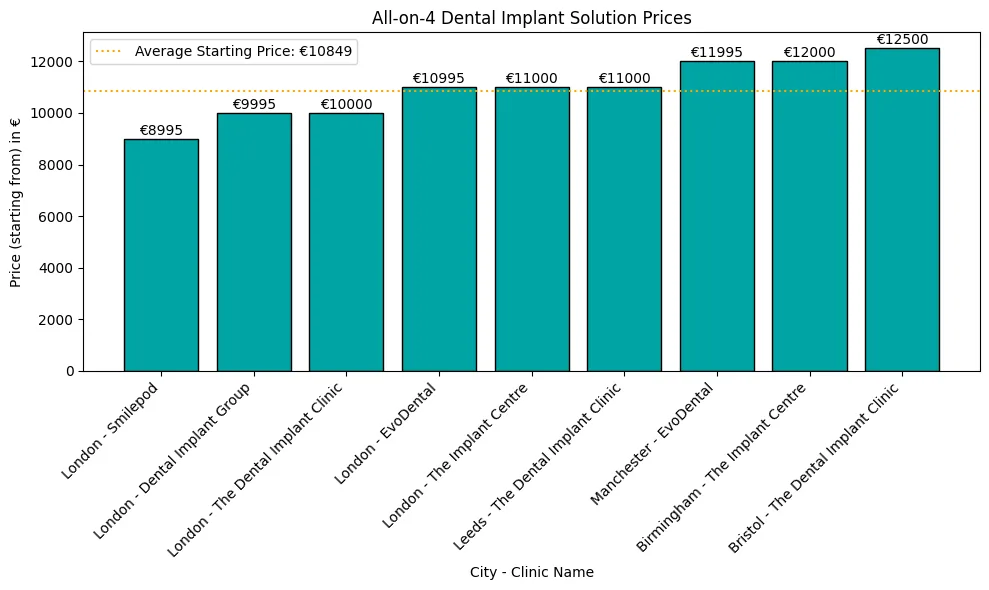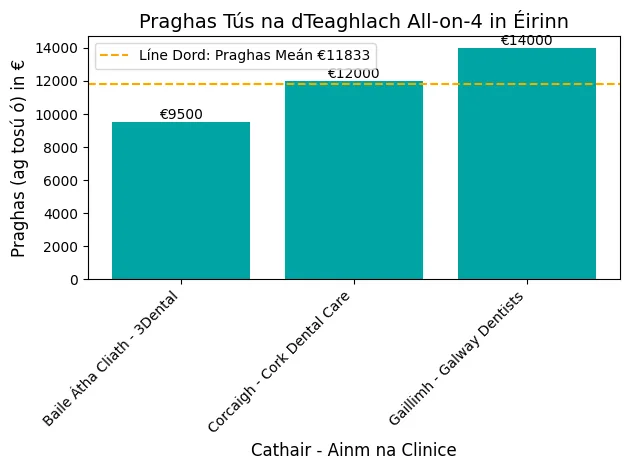Ngarkim i vonuar implantet dentare janë një temë e nxehtë për shumë pacientë që kërkojnë një zgjidhje të besueshme dhe afatgjatë për zëvendësimin e dhëmbëve.
Por vendimi ndërmjet i menjëhershëm dhe i vonuar ngarkimi i lë pacientët të pyesin se çfarë është më e mira për ta dhe cilat janë normat e suksesit, kohët e trajtimit dhe rreziqet e përfshira.
Çfarë është ngarkimi i vonuar në implantet dentare?
Ngarkimi i vonuar në implantet dentare është një qasje strategjike për vendosjen e implantit, duke lejuar rritjen e osteointegrimit dhe suksesin. Kjo metodë zakonisht kërkon një periudhë shërimi 3-6 mujore, duke minimizuar forcat vertikale ose anësore gjatë fazës së shërimit. Ai zvogëlon rrezikun e dështimit të implantit, veçanërisht në pacientët me cilësi të dëmtuar të kockave dhe kushton nga 2,000 deri në 4,000 € në Evropë.

Implantet Dentare me ngarkim të menjëhershëm kundër ngarkimit të vonuar
Dallimet kryesore Implantet dentare me ngarkim të menjëhershëm dhe të vonuar janë dy qasje të ndryshme, secila me përfitimet dhe konsideratat e veta.
Përfitimet e ngarkimit të vonuar
Ngarkimi i vonuar i implantit lejon një periudhë shërimi prej 3-6 muajsh, e cila mund të përmirësojë osseointegrimin dhe stabilitetin (1).
Kjo zvogëlon rrezikun e dështimit të implantit, veçanërisht në pacientët me kockë të dëmtuar ose ata që kanë nevojë për transplantim të kockave.
Studimet kanë treguar se ngarkimi i vonuar ka komplikime më të ulëta të implantit, veçanërisht në rastet komplekse (2).
Avantazhet e ngarkimit të menjëhershëm
Ngarkimi i menjëhershëm ka avantazhin e uljes së kohës së trajtimit; pacientët mund të marrin restaurimin funksional dhe estetik pothuajse menjëherë (3).
Kjo është e mirë për ata që duan rezultate të shpejta dhe kohë minimale joproduktive.
Hulumtimet tregojnë se ngarkimi i menjëhershëm mund të ketë të njëjtën shkallë suksesi si ngarkimi i vonuar nëse pacienti ka densitet të mjaftueshëm kockor dhe shëndet të mirë oral (4).
Por ne duhet të marrim parasysh modelin e okluzionit dhe veshjes për të minimizuar rrezikun e dështimit të implantit (5).

Faktorët që duhen marrë parasysh ndërmjet ngarkimit të menjëhershëm dhe të vonuar
Vendosja midis implanteve dentare me ngarkim të menjëhershëm dhe të vonuar pas operacionit të implantit përfshin disa faktorë kyç që mund të ndikojnë në rezultatin.
Shëndeti dhe higjiena orale e pacientit
Shëndeti oral i pacientit, veçanërisht në rastet e mungesës së dhëmbëve, është një faktor i madh në përcaktimin e strategjisë së ngarkimit.
Pacientët me higjienë të mirë orale dhe pa histori të sëmundjes periodontale mund të shkojnë për ngarkim të menjëhershëm (1).
Ata me shëndet të dëmtuar oral mund të përfitojnë më shumë nga ngarkimi i vonuar, gjë që lejon kohë për shërim dhe redukton rrezikun e infeksionit ose dështimit të implantit (2).
Cilësia dhe dendësia e kockave
Cilësia dhe dendësia e kockave janë faktorë të mëdhenj në zgjedhjen midis ngarkimit të menjëhershëm dhe të vonuar.
Ngarkimi i menjëhershëm kërkon densitet të mjaftueshëm kockor për të mbështetur implantin (3).
Në rastet kur cilësia e kockës është jooptimale, ngarkimi i vonuar mund të sigurojë kohë për shartimin e kockave ose procedura të tjera përgatitore për të rritur suksesin e implantit (4).
Konsiderata estetike
Estetika është një shqetësim i madh për shumë pacientë.
Ngarkimi i menjëhershëm mund të sigurojë restaurim më të shpejtë të estetikës, gjë që është e mirë për implantet në rajonin e përparmë ku estetika është thelbësore (5).
Por arritja e rezultatit të dëshiruar estetik kërkon planifikim dhe vlerësim të kujdesshëm të profilit të indeve të buta dhe linjës së buzëqeshjes së pacientit (6).
| Faktori | Ndikimi në ngarkimin e menjëhershëm | Ndikimi në ngarkimin e vonuar |
|---|---|---|
| Shëndeti dhe higjiena orale e pacientit | Kërkon higjienë të shkëlqyer orale dhe pa histori të sëmundjes periodontale për sukses (1). | Lejon kohë për shërim, duke reduktuar rrezikun e infeksionit ose dështimin e implantit në shëndetin oral të komprometuar (2). |
| Cilësia dhe dendësia e kockave | Ka nevojë për densitet të mjaftueshëm kockor për stabilitetin e implantit (3). | Ofron kohë për transplantimin e kockave ose procedurat përgatitore kur cilësia e kockës është jooptimale (4). |
| Konsiderata estetike | Ofron restaurim më të shpejtë të estetikës, i dobishëm për implantet e zonës së përparme (5). | Mund të kërkojë planifikim të kujdesshëm për rezultatet e dëshiruara estetike (6). |
Procesi i ngarkimit të vonuar të implanteve dentare
Procesi i ngarkimit me vonesë të implanteve dentare Kuptimi i ngarkimit të vonuar të implanteve dentare përfshin disa faza për të cilat pacientët duhet të dinë.
Faza fillestare e shërimit
Faza fillestare e shërimit është kritike për ngarkimin e vonuar të implanteve.
Gjatë kësaj faze, e cila është zakonisht 3-6 muaj, vendi i implantit lejohet të shërohet pa asnjë ngarkesë funksionale (1).
Kjo fazë është e rëndësishme për të minimizuar komplikimet dhe për të siguruar që implanti të integrohet mirë me kockën përreth.
Studimet kanë treguar se lejimi i kësaj kohe shërimi mund të zvogëlojë rrezikun e dështimit të implantit, veçanërisht në pacientët me kocka të komprometuara (2).

Periudha e Oseointegrimit
Oseointegrimi është procesi i lidhjes së fortë të implantit me kockën e nofullës.
Kjo periudhë është e rëndësishme për stabilitetin afatgjatë të implantit.
Hulumtimet tregojnë se osseointegrimi mund të arrihet brenda 3-6 muajve në varësi të faktorëve individualë të pacientit, si densiteti i kockave dhe shëndeti i përgjithshëm (3).
Asnjë stres mekanik gjatë kësaj periudhe nuk lejon rritjen optimale të kockave dhe stabilitetin e implantit, gjë që është e rëndësishme për jetëgjatësinë e implantit dentar (4).
Vendosja e protezës
Pas osseointegrimit, faza përfundimtare është vendosja e kurorës protetike.
Kjo përfshin ngjitjen e kurorës me implantin dhe rivendosjen e funksionit dhe estetikës.
Koha e vendosjes së protezës është planifikuar me kujdes për të siguruar që implanti të mund të mbajë ngarkesën pa cenuar qëndrueshmërinë e tij (5).
Kjo është faza e fundit e ngarkimit të vonuar; pacientët do të kenë një zëvendësim të qëndrueshëm dhe me pamje natyrale.

Rreziqet dhe Sfidat
Dështimi i implantit
Një nga rreziqet më të mëdha me ngarkimin e vonuar është dështimi i implantit.
Megjithëse periudha e zgjatur e shërimit është projektuar për të përmirësuar osteointegrimin, shëndeti i pacientit, cilësia e kockave dhe kujdesi pas operacionit mund të ndikojnë në rezultatin.
Hulumtimet tregojnë se ngarkimi i vonuar mund të ketë një shkallë dështimi prej 5-10% në pacientët me probleme themelore shëndetësore ose kockë të dobët (1).
Procesi i shërimit
Procesi i shërimit në ngarkimin e vonuar mund të ndikohet nga disa faktorë, duke përfshirë shëndetin e përgjithshëm të pacientit dhe mënyrën e jetesës.
Pirja e duhanit për shembull, mund të vonojë shërimin dhe të rrisë komplikimet (2).
Periudha e zgjatur para vendosjes së implantit mund të shkaktojë gjithashtu pakënaqësi të pacientit për shkak të kohës së zgjatur të trajtimit.
Pacientët duhet të kuptojnë rëndësinë e kësaj faze dhe t'i përmbahen protokollit të rekomanduar të kujdesit për një rezultat të suksesshëm.

Përfundim & Çështje kryesore
Pikat kryesore:
Ngarkimi i vonuar: Ngarkimi i vonuar i implanteve dentare lejon një periudhë shërimi që rrit osteointegrimin dhe redukton dështimin e implantit, veçanërisht në pacientët me kocka të komprometuara (1).
Ngarkimi i menjëhershëm: Ngarkimi i menjëhershëm ka restaurim më të shpejtë dhe një shkallë të ngjashme suksesi kur gjendja e pacientit është optimale, densitet kockor i mjaftueshëm dhe higjienë e mirë orale (2).
Pacienti specifik: Zgjedhja midis ngarkimit të menjëhershëm dhe të vonuar duhet të marrë parasysh faktorët individualë të pacientit, si shëndeti oral, cilësia e kockave dhe nevojat estetike, për një rezultat të suksesshëm (3).
konkluzioni:
Tani që e dini ndryshimin midis ngarkimit të menjëhershëm dhe të vonuar të implanteve dentare, mund të merrni një vendim të informuar për veten tuaj.
Duke marrë parasysh shëndetin tuaj oral dhe cilësinë e kockave, ju mund të keni sukses funksional dhe estetik me implantet tuaja dentare.

FAQ
Referencat
Babayi M, Ashtiani MN, Emamian A, etj. Diferencimi i qelizave peri-implantare në implantin dentar të vonuar dhe të ngarkuar menjëherë: Një simulim mekanobiologjik. J Theor Biol. 2023;515:110637.
Neni: Diferencimi i qelizave peri-implantare në implantin dentar të vonuar dhe të ngarkuar menjëherë: Një simulim mekanobiologjik
Nkenke E, Lehner B, Weinzierl K, et al. Kontakti, rritja dhe dendësia e kockave rreth implanteve të ngarkuara menjëherë në mandibulën e mini derrave. Clin Oral Implants Res. 2003;14(3):312-321.
Neni: Kontakti, rritja dhe dendësia e kockave rreth implanteve të ngarkuara menjëherë në mandibulën e mini derrave
Kinaia BM, Kazerani S, Korkis S, etj. Efekti i rigjenerimit të udhëhequr të kockës në implantet e vendosura menjëherë: Meta-analiza me të paktën 12 muaj ndjekje pas ngarkimit funksional. J Paradontol. 2019.
Neni: Efekti i rigjenerimit të drejtuar kockave në implantet e vendosura menjëherë: Meta-analiza me të paktën 12 muaj ndjekje pas ngarkimit funksional
Porter JA, von Fraunhofer JA. Sukses apo dështim i implanteve dentare? Një përmbledhje e literaturës me konsiderata të trajtimit. Gjeneral Dent. 2005;53(6):423-432.
Neni: Sukses apo dështim i implanteve dentare? Një përmbledhje e literaturës me konsiderata të trajtimit
Chang YL, Lew D, Park JB, etj. Analiza biomekanike dhe morfometrike e implanteve të veshura me hidroksiapatit me kristalitet të ndryshëm. J Oral Maxillofac Surg. 1999;57(9):1096-1108.
Neni: Analiza biomekanike dhe morfometrike e implanteve të veshura me hidroksiapatit me kristalitet të ndryshëm
I vonuar kundrejt ngarkimit të menjëhershëm të implanteve: Analiza e mbijetesës dhe faktorët e rrezikut për dështimin e implantit dentar. J Oral Maxillofac Surg. 2023.
Neni: I vonuar kundrejt ngarkimit të menjëhershëm të implanteve: analiza e mbijetesës dhe faktorët e rrezikut për dështimin e implantit dentar



